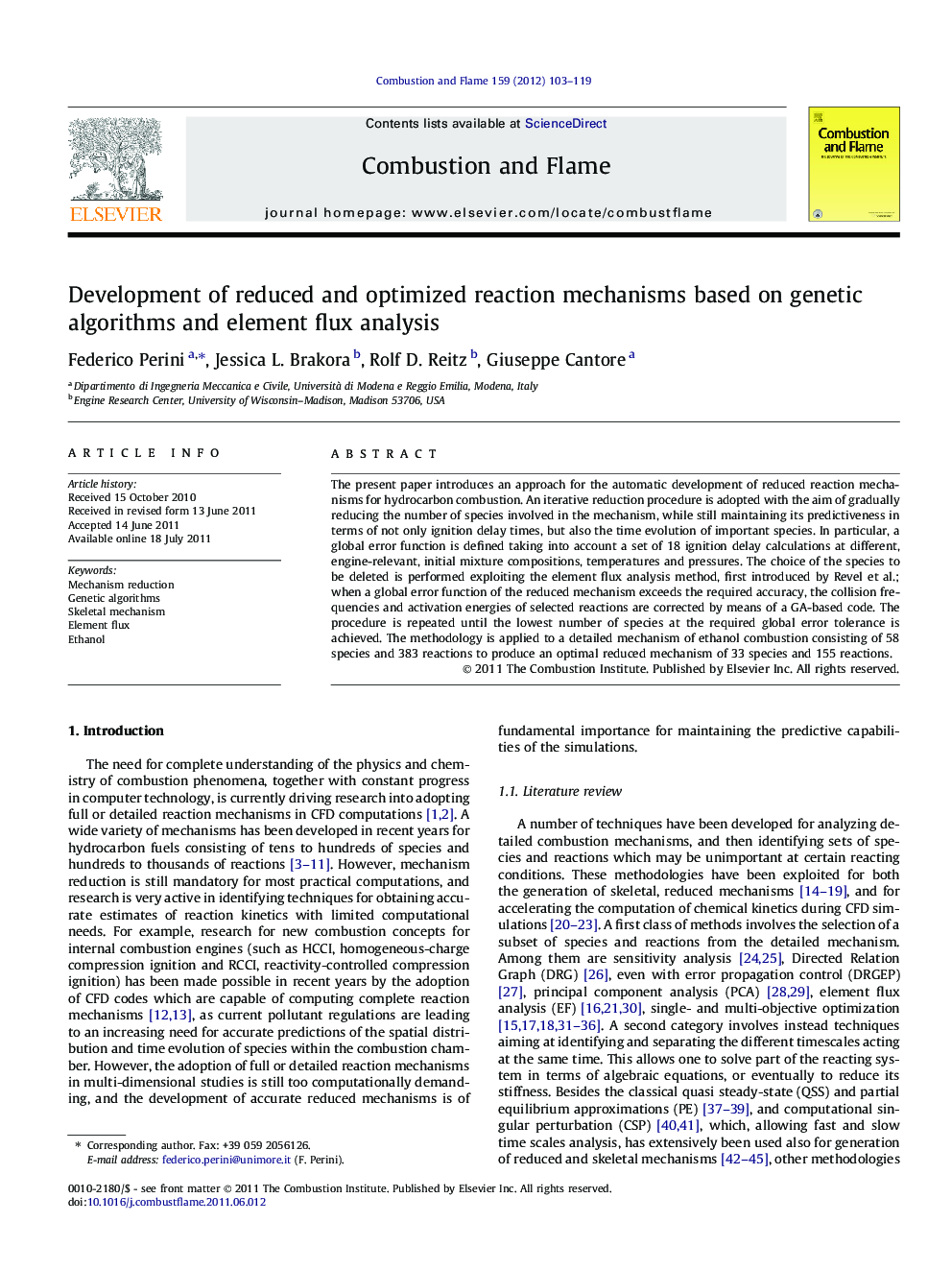| Article ID | Journal | Published Year | Pages | File Type |
|---|---|---|---|---|
| 169158 | Combustion and Flame | 2012 | 17 Pages |
The present paper introduces an approach for the automatic development of reduced reaction mechanisms for hydrocarbon combustion. An iterative reduction procedure is adopted with the aim of gradually reducing the number of species involved in the mechanism, while still maintaining its predictiveness in terms of not only ignition delay times, but also the time evolution of important species. In particular, a global error function is defined taking into account a set of 18 ignition delay calculations at different, engine-relevant, initial mixture compositions, temperatures and pressures. The choice of the species to be deleted is performed exploiting the element flux analysis method, first introduced by Revel et al.; when a global error function of the reduced mechanism exceeds the required accuracy, the collision frequencies and activation energies of selected reactions are corrected by means of a GA-based code. The procedure is repeated until the lowest number of species at the required global error tolerance is achieved. The methodology is applied to a detailed mechanism of ethanol combustion consisting of 58 species and 383 reactions to produce an optimal reduced mechanism of 33 species and 155 reactions.
